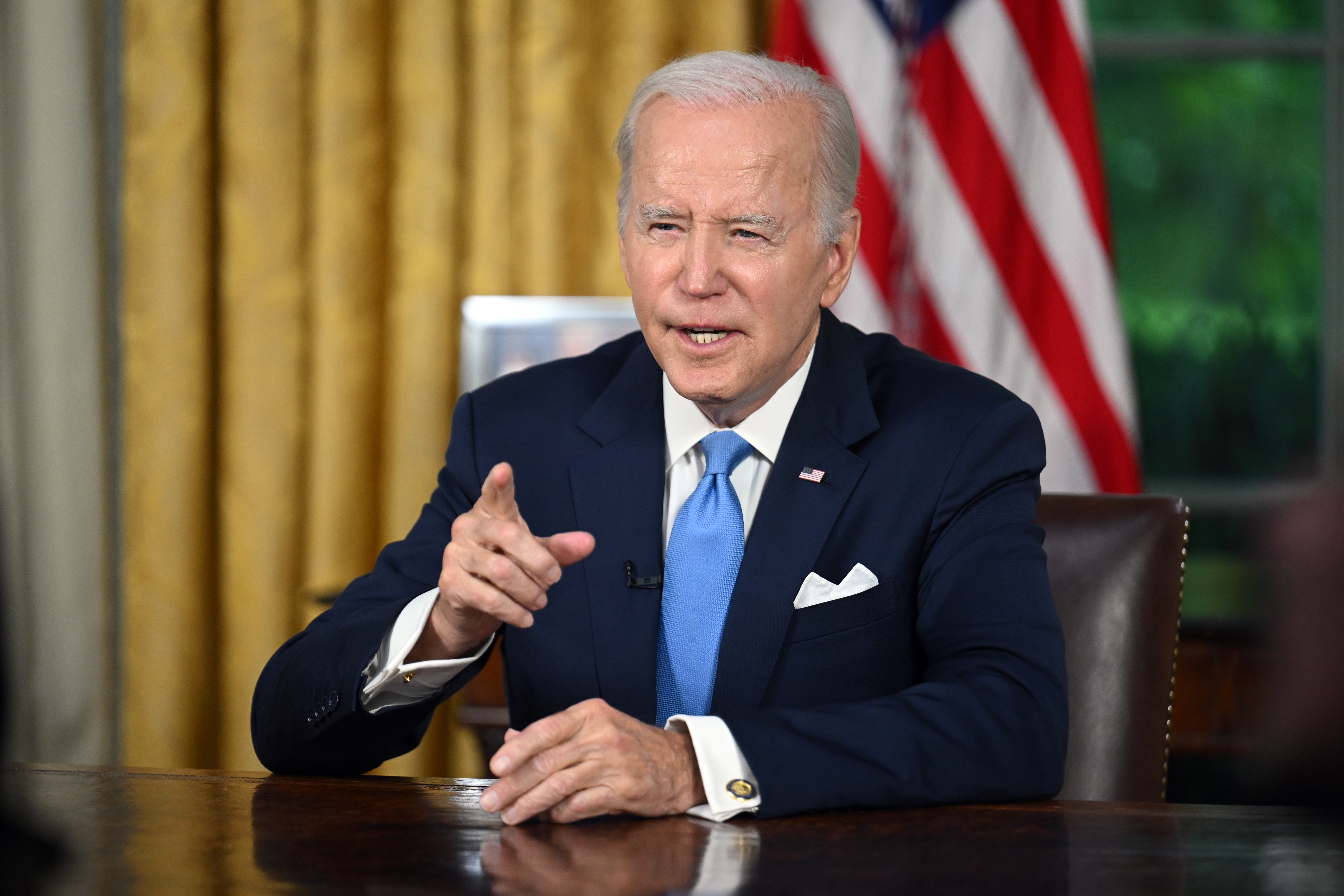As border crossings dip, Biden admin crows about the fiasco that never happened
“The Administration’s plan is working as intended," the White House said.


The Biden administration on Tuesday took a victory lap, declaring that its immigration plan is “working as intended” nearly a month after a major shift in policy at the nation’s southern border.
The Department of Homeland Security said that since the lifting of the public health order known as Title 42 at midnight May 12, unlawful border crossings have plummeted by more than 70 percent. In a press release, the Biden administration cited its “execution” of a plan that paired tough consequences for unlawful entry with an expansion of lawful pathways and processes for migrants in the hemisphere.
“Since the CDC’s Title 42 public health Order lifted and the Biden-Harris Administration’s comprehensive plan to manage the border went into full effect on May 12, DHS has continued to experience a significant reduction in encounters at the Southwest Border,” the press release said. “The Administration’s plan is working as intended.”
In the weeks leading up to May 11, administration officials warned of a challenging period ahead as it transitioned away from the Trump-era policy, which allowed border agents to immediately expel millions of migrants on public health grounds. Even President Joe Biden said on May 10 that it was going to be “chaotic for a while” at the southern border.
But the anticipated surge never happened, and in the early days after the lifting of Title 42, White House officials breathed a collective sigh of relief. DHS on Tuesday took the opportunity to highlight the anticipated border fiasco that never came to be.
Homeland Security broke down the results of its approach, including the effects of the administration’s new asylum ban that bars some migrants from applying for asylum if they cross the border illegally or fail to first apply for safe harbor while crossing through another country on the way to the U.S.
Last month, the Biden administration also returned to expedited removal processes under Title 8, which allows the government to remove from the country anyone unable to establish a legal basis. Removal under Title 8 also bans these migrants from the country for five years.
From May 12 to Friday, DHS said it sent 38,400 migrants, including single adults and families, back to more than 80 countries. Of this total, the administration deported more than 14,000 migrants from Cuba, Haiti, Nicaragua and Venezuela to Mexico. Thousands of other migrants have been detained and are being processed to assess asylum claims, the administration said.
“Those found not to have a credible fear have been and will continue to be expeditiously removed,” the press release said, citing the criteria for seeking asylum.
Customs and Border Protection has seen an average of 3,400 encounters between points of entry per day, significantly lower than the roughly 10,000 encounters in the days leading up to the end of Title 42. And less than 300 migrants have appeared without CBP One app appointments, totaling 3,700 unscheduled encounters daily.
DHS also said United States Citizen and Immigration Services has completed 11,500 credible fear interviews in the past few weeks, and that it expects this number to increase as processes continue to scale up. For the CBP One app, which has been plagued by technical glitches, an average of 1,070 migrants presented with appointments at a point of entry each day. This number is expected to grow after the administration announced it would make available 1,250 appointments a day.
Also since May 12, an additional 23,000 migrants from Cuba, Haiti, Nicaragua and Venezuela arrived in the U.S. after completing the vetting and sponsorship qualifications, the administration said.
While the administration linked its policy solutions to the decrease in border crossings, the press release did warn that the unprecedented levels of migration in the region will continue, as will the ongoing threat of disinformation being spread to vulnerable migrants.
DHS also touched on another uncertain element of its border plan: litigation from both sides of the political spectrum that challenges central aspects of its post-Title 42 plan, including the humanitarian parole program and its asylum ban.
“It is abundantly clear that executive action cannot solve the entrenched challenge of migration in our region, and that neither party can address its impact on our border by itself,” DHS said. “Until and unless Congress comes together in a bipartisan way to address our broken immigration and asylum system, we will continue to see surges in migration at our border.”












